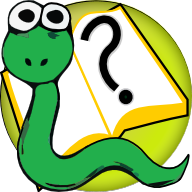Strings¶
Introduction¶
A string is a piece of text. Strings are made up of characters; a character is a single letter, digit, symbol or whatever. Python provides lots of things for doing with strings; this sheet tells you about some of them.
Entering strings¶
You can put a string into your program by putting it inside quotation marks. Single quotes and double quotes are both fine, but you must use the same sort of quotation mark at the start and at the end!
In these worksheets, I’ve usually used single quotes. If you prefer double
quotes, that’s fine. If you want a string that contains a single-quote
character (which also serves as the apostrophe), you should surround it with
double quotes: "I'm bored" rather than 'I'm bored' (which won’t work at
all: can you see why?)
Strings as sequences¶
There are some things that work on lists as well as on strings. They work because both lists and strings are sequences . Here’s a very brief summary. You might want to compare with with Sheet A (Lists).
>>> thing = 'I am the walrus' # A string to work with
>>> gloop = "Another string" # And another one
>>> thing + gloop # String concatenation...
'I am the walrusAnother string' # quad works as you might guess
>>> 2 * thing # String replication...
'I am the walrusI am the walrus' # quad also does what you'd think
>>> thing[0] # We start counting at 0
'I' # quad so we get the first character
>>> thing[1:5] # Characters 1 (inclusive) to 5 (exclusive)
' am ' # quad so 4 characters in all
>>> len(thing) # How many characters?
15 # That many!
String methods¶
Strings have a whole lot of useful methods (see Sheet O) that you can use. Here are a few useful ones:
>>> 'walrus.'.capitalize()
'Walrus'
>>> 'WalRUs'.lower()
'walrus'
>>> 'WalRUs'.upper()
'WALRUS'
>>> 'I am the walrus'.split()
['I', 'am', 'the', 'walrus']
>>> 'I am a twit'.replace('a', 'the')
'I them the twit'
There are a lot more things you can do with strings if you want to. If there’s something you can’t see how to do, ask your teacher.
Other things¶
It’s possible to convert just about any object into a string that represents
it. So, for instance, 1234 would become the string '1234'. The function
that does this is called repr — short for representation. So, whatever
x is, repr(x) is a string describing it.
